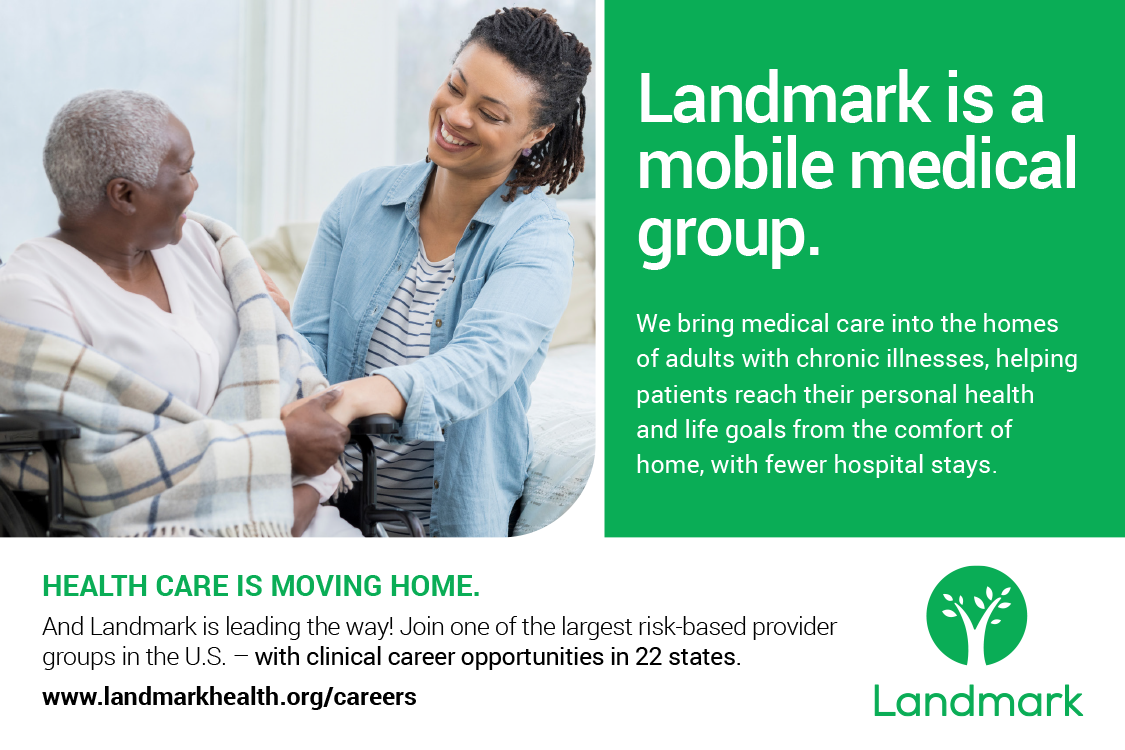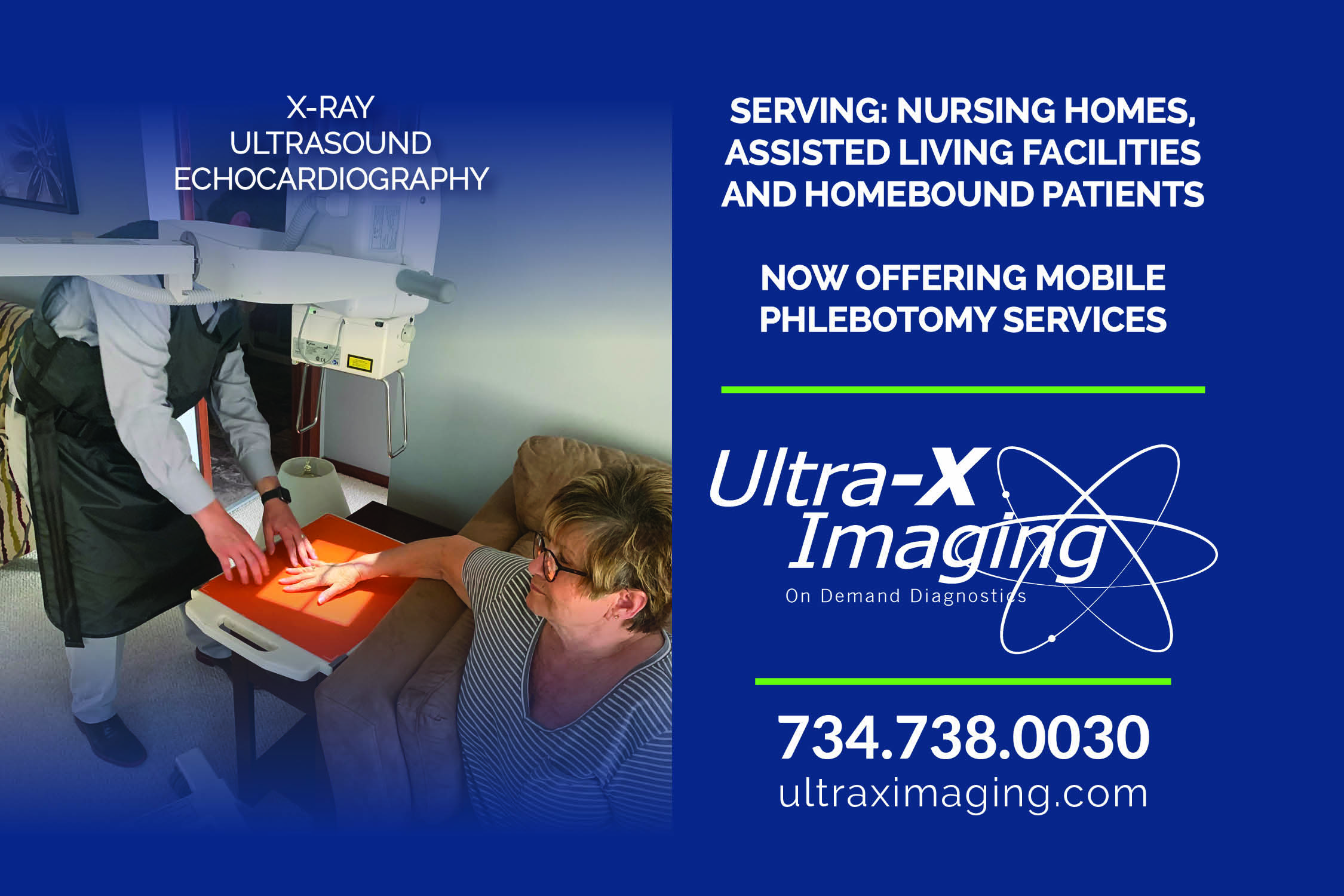|
FRONTIERS The Quarterly Newsletter of the American Academy of Home Care Medicine | Winter 2022

CULTURAL AWARENESS & HEALTH EQUITY
Home-Based Palliative Care and SDOH
Opportunity to change the paradigm
JILL SCHWARTZ-CHEVLIN, MD, MBA, FACP
SENIOR MEDICAL OFFICER, LANDMARK HEALTH
Disparities in health outcomes related to socioeconomic status (SES) and racial and ethnic background became a paramount issue over the last twenty to thirty years and continue to be a significant issue in the U.S. healthcare system. Patients diagnosed with serious illness suffer from these disparities manifested by fewer advance care planning discussions, more hospital deaths, and fewer hospice transitions (Johnson, 2013). We will briefly review the history of social determinants of health (SDOH) and its relevance and importance to palliative care. We will then review the relationship of SDOH, palliative care, and community-based house call medicine and ways in which home-based medical care is uniquely positioned to identify SDOH and develop creative solutions to address them.
SDOH gained recognition in the 1960s with a study known as Whitehall that found that those associated with lower SES had worse health outcomes compared with those in a higher SES. A follow-up study in the 1980s, Whitehall II, found that job grade was associated with control over decisions, finding that the less control, the higher the stress, and the worse health outcomes compared with higher job grades. In the 1980s a task force on Black and Minority Health (aka The Heckler Report) found that there was an association between minority status and lower health outcomes. Then in 1999, Social Determinants of Health, by Marmot and Wilkenson, reported that by changing poor social conditions, health outcomes change. In 2010 the World Health Organization embraced a framework for SDOH and proposed that by creating upstream changes in social structure, this can trickle down to cause downstream effects that positively impact health outcomes (Osmick and Wilson, 2020). More recent studies tie severity of symptoms to poor social supports, isolation, and lack of financial resources (Salas, et al, 2019). However, despite all this evidence, a study reviewing the trends in health equity from 1993-2017 found little has changed in the health equity metric over this time (Zimmerman, Anderson, 2019).
How do we turn visibility into change?
Community Investment
With the recent expansion of Medicaid as part of ACA in 2021, providing medical coverage to a greater number of underserved patients will likely help to reduce health inequities in the 38 states and District of Columbia (MACPAC) trying to address the disparities by expanding coverage. But this is not enough. Better outcomes are not all about provision of health services. What we have learned from earlier work is that our social environment is inextricably tied to health outcomes. As disparities in health outcomes become widely recognized by healthcare organizations and other public health entities, there has been a growing urgency to focus on changing upstream conditions in order to impact downstream effects and health outcomes. Some employers have begun to change the upstream conditions by creating key performance indicators around addressing social risk factors and unmet social needs of employees (Osmick and Wilson, 2020). A 2014 research study, Building Sustainable Communities, offers a number of case studies demonstrating that when businesses invest in specific projects for underserved communities, income and employment in those communities improve (Walker, 2014). Similarly, The Center for American Progress points to support for workers as fundamental for healthier, wealthier communities. More efforts are needed by community businesses to help invest in low-income communities.
Advertisement

Bridging Cultural Divides in Advanced Illness
Palliative care, my area of expertise, is care for those with serious illness working to improve their quality of life by addressing the physical, emotional, social, and spiritual issues related to their illness. This is usually accomplished with an interdisciplinary team and with a holistic, patient-family centric approach, provided irrespective of stage of disease. Patients experience improved quality of life, with reduced anxiety and depression (Goldstein, 2019). The multidisciplinary approach to care to improve quality has been shown to be beneficial to improve patient and family satisfaction, reduce unnecessary hospitalizations, and improve appropriate transitions to hospice (Meier, 2011). While palliative care has become commonplace in hospital programs, community based palliative care programs are still scarcely available and home-based palliative programs are even more difficult to find, especially in rural geographies. Many communities are lacking palliative care resources for patients.
In addition, even when resources are available, we see a racial divide in the use of palliative resources. A disproportionate use of palliative and hospice services are from white versus black and other minority patients (Ornstein, et al, 2020). Understanding that there are cultural differences in acceptance of palliative and hospice services — and that these differences contribute to health outcomes — takes us back to the issue of SDOH (Gardner et al, 2018). While we think of social determinants as food, housing, education, income, job, and literacy, other social determinants like culture are also strong contributors to disparities in health outcomes (Knibb-Lamouche, 2012). Cultural differences in approach to serious illness and advanced stage disease need to be considered in patient-centered care plans. There has not been enough training and education of medical professionals in this space, including in the palliative care realm — even with access to patients in their homes, experienced clinicians can still face cultural barriers. Through increased cultural sensitivity and competency training, as well as increased ethnic diversity of healthcare workers, healthcare disparities will improve. (Nair and Adetayo, 2019)
Bringing it Home
In my experience providing home-based medical care for those with serious illness with Landmark Health, the clinical team is uniquely positioned to develop meaningful relationships with patients and families given the holistic, patient-centric approach to care. Patient and family issues are explored through health assessments inquiring about education, housing, food insecurity, health literacy, social supports, to name a few. These assessments are performed on initial evaluation and repeated annually and with significant changes in clinical condition. In addition, patients and families are given the opportunity to have meaningful goals-of-care conversations centered on what matters most to them, discussing their wishes, hopes, and fears. Through this process, patient and family cultural norms are often exposed, which helps the clinician understand the patient needs from a different perspective, permitting the clinician to invite members of the interdisciplinary care team to assist in addressing patient concerns. In addition, fragmentation is reduced through regular collaboration with primary care physicians and specialists, and through seamless transitions to community hospice agencies, when appropriate.
There’s Still Work to Do
Perhaps keys to reducing health care disparities among black and minority patients involves upstream thinking, addressing the social environment in which people live, work and play, through a multidimensional approach — through policymakers, employer efforts, community organizations, and healthcare organizations. This approach may include developing relationships with patients and families that can be instrumental in helping to understand social stressors and cultural dynamics, meaningfully addressing needs and concerns from a patient-centric perspective. Additional efforts will need to be focused on increasing cultural competency in healthcare to help improve quality care. Most would agree, more research in this area is welcomed to help reduce these gaps in care.
Advertisement

Back to Frontiers >
|